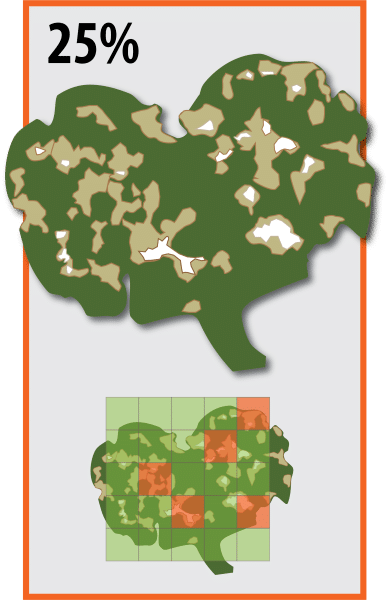What’s Plan B?
Growers facing excessively wet fields should pre-think seeding contingency options now, even if it’s not yet time to pull that trigger. Broadcast seeding carries higher risk of variable emergence but may still be better than the risk of not getting seed in at all, or the rutting, mudding in and compaction of running drills in wet ground. If broadcasting proves necessary, triage fields: seed first into fields with best access (least moisture) and best carry-over fertility. Broadcast phosphorus is only half as efficient as banded, and unprotected urea is at high risk of volatilization on wet soil surfaces. *Access to alternate seeding and fertilizing equipment and additional inputs could prove challenging.* (Broadcast seeding canola tips) (Agroclimate interactive maps)

Be ready to stop hungry flea beetles
Early emerging canola, especially seedlings suffering stress from cool soil / drought / excess moisture, is at ultra-high risk of flea beetle damage. Though it can be difficult to find time for other tasks once seeding begins, regular scouting is critical: flea beetles can emerge in large numbers and decimate a young canola crop within days. If flea beetles are present and actively feeding, the action threshold for foliar insecticide in a normal plant population is typically 25% leaf area defoliation. (Flea beetles: important tips for best management)
Weeds wait for no one
This year’s slow start in many regions means early season workload will be compressed for many growers… but that flush of green from early season weeds can’t be ignored. Pre-seed burnoff is the best first line of defence: controlling the earliest-season weeds has the highest return on investment of any weed control application. Allow 24 hours after spraying for annuals/winter annuals, and 3-5 days after spraying for perennials before seeding. If pre-seed burnoff isn’t achievable or a second flush of weeds appears, be ready to roll with a timely post-seeding herbicide. (Spraying tips for tough conditions) (Integrated weed management)
Up the rate when seeding is difficult & late
When seeding is finally possible in areas delayed by excess moisture, it will likely be into cool, wet soil. To give canola its best chance despite delayed and potentially compromised emergence – and to help it reach maturity before fall frost – target the higher end of the recommended range of 5 to 8 plants per square foot. An AAFC study showed higher plant density reduced days to flowering (which can help canola outpace the hottest days of summer) and days to maturity. (Tips to help late seeded canola mature faster) (Canola calculator)